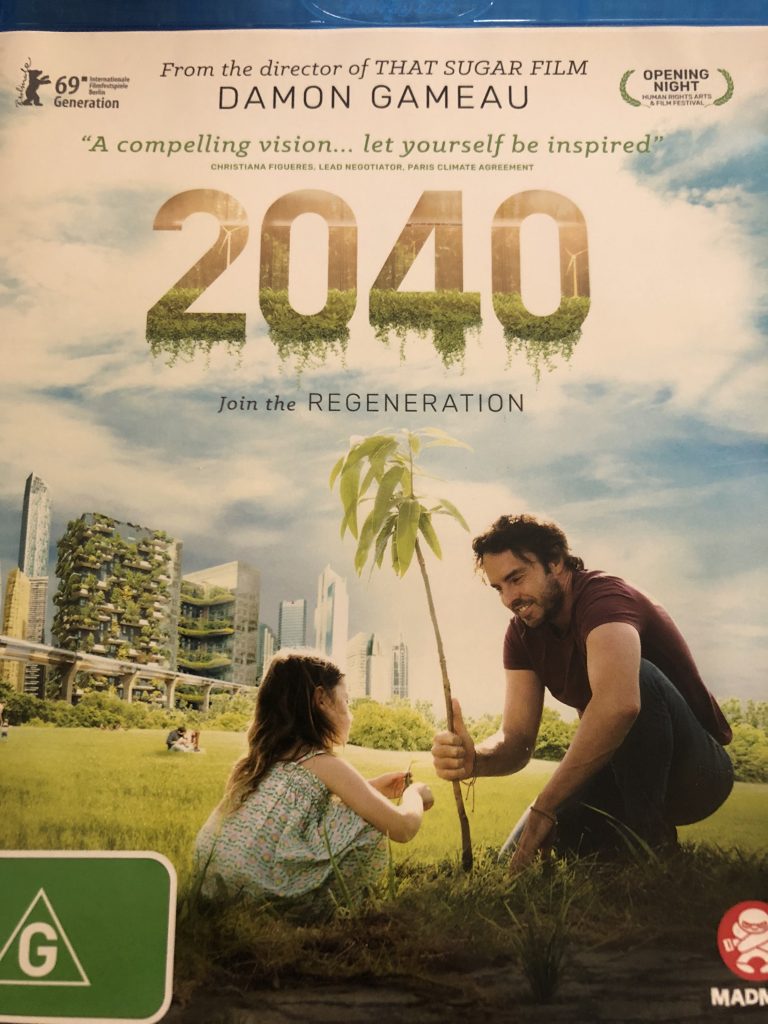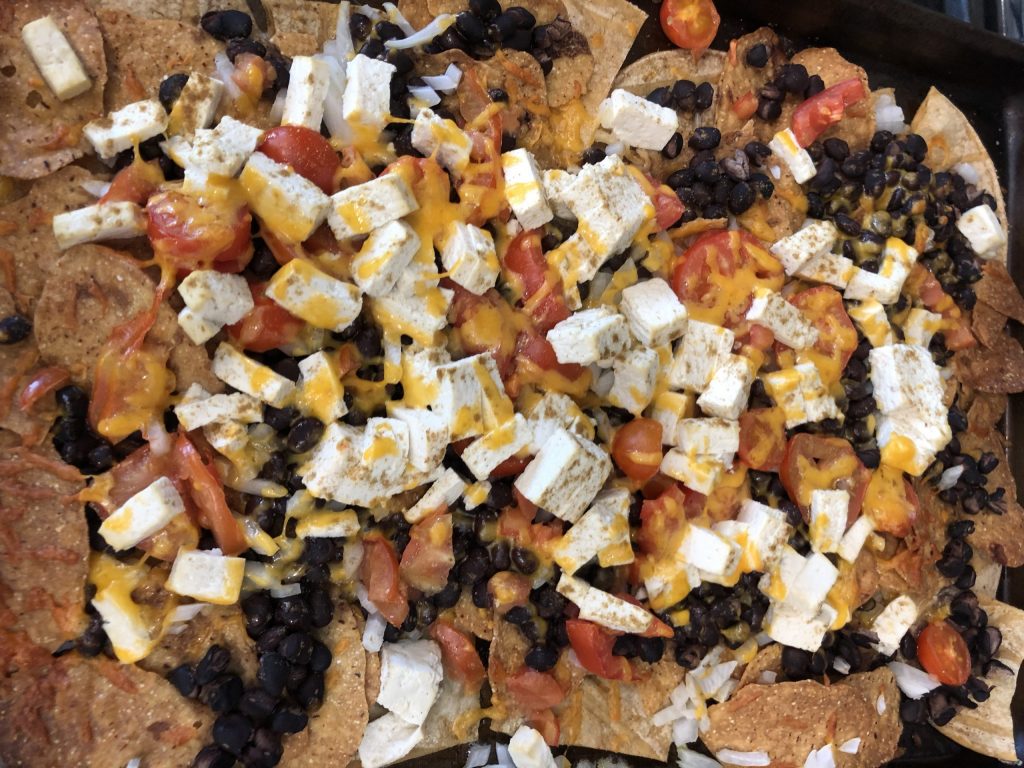My Path is More Clear: What “Drawdown” and “2040” taught me about Climate Change

June 15, 2020
by drplasticpicker
It’s funny how life works out. I was finding my thought processes getting sillier and sillier. I had finished my third flip flop trash art piece, and it made me laugh. I used an old blood pressure cuff and some vaping pens, and made a pretty large trash art piece called ‘Hypertensive Man.” I was even singing this catchy diddy I made up when I was hot-glue gunning him together. Mr. Plastic Picker and the kids laughed when I showed them. Then yesterday morning I found so many flip-flops at the beach and thought – do I really bring these all home and make more trash art people? I didn’t have enough room in my bag so I threw in the bin but did bring home 14 aluminum cans to recycle as they are the high-yield salvagable https://drplasticpicker.com/aluminum-cans-the-high-yield-salvagable/. At some point you have to make the decision of where you spend your efforts. The aluminum cans yes. More flip flops for trash art, maybe not.
And then Mr. Plastic Picker bought the movie above “2040” which I had seen advertised on Instagram. And I also had on my to-read list “Drawdown The Most Comprehensive Plan Ever Proposed to Reverse Global Warming” edited by Paul Hawken. I had borrowed it several months ago and had not really read it, and wanted to return it to my friend and Co-Leader for our Girl Scout Troop today. I finally had a chance to read it and then we watched 2040 during movie night. In fact much of “2040” is based on the more comprehensive “Drawdown” and Paul Hawken is featured in the movie. Both are excellent and in short my world is rocked. I felt I was very well read regarding the environment, but really reading the impact of different measures helps me focus on again the high-yield and greater impactful part of environmental advocacy. I will still pick plastic and make trash art, but these two works reinforce what I had been focused on previously.
These are the relevant powerful sections I want to keep as reminders. I am really using this post as a set of environmental notes and reminders for myself, to refocus this blog and my environmental work. This blog had always been about my panic regarding ocean plastic and my gut-wrenching fear about climate change. What I found powerful is that my place as a pediatrician in the world, a mother, a Girl-Scout leader, and a random crazy pediatrician that picks up plastic and posts on Instagram/Facebook – enables me to help the world avert climatic disaster.
I will still make the occassional trash art series, but I have been reaffirmed to keep at what is the most impactful. Below are my notes and direct quotes from Drawdown. The whole point of Drawdown is to list the actions that the world can take, and made a evidence-based judgement at how impactful they are in reversing global warming. This is a nonmonetized blog so I think they are going to be okay with this blogpost. Here is their website https://www.drawdown.org/ and I’ve signed up for their email list as well.
#3. Reduced Food Waste.
- “The food we waste contributes 4.4 gigatons of carbon dioxide equivalent into the atmosphere each year – roughly 8 percent of total anthropogenic greenhouse gas emissions. Ranked with countries, food would be the third-largest emitter of greenhouse gases globally, just behind the United States and China.” Page 42
- “In regions of higher incomes, unintentional losses tend to be minimal, willful food waste dominates farther along the supply chain. Retailers reject food based on bumps, bruises, coloring – aesthetic objections of all sorts.” And then we wate it at home, and buy too much sometimes.
- “Producing uneaten food squanders a whole host of resources – seeds, water, energy, land, fertilizer, hours of labour, financial capital – and generates greenhouse gases at every stage – including methane when organic matter lands in the global rubbish bin.”
- “Consumer education is another powerful tool, including campaigns celebrating ‘ugly’ produce.”
- “Given the complexity of the supply chain that food travels, waste reduction depends on the engagement of diverse actors: food businesses, environmental groups, antihunger organizations, and policy makers. Also critical are the world’s 7.4 billion eaters – especially those who live where food waste is greaters: the United States and Canada, Australia and New Zealand, industrialized Asia, and Europe.”
#4. Plant-Rich Diet.
- “Overconsumption of animal protein also comes at a steep cost to human health. In many places around the world, the protein eaten daily goes well beyond dietary requirements. On average, adults require 50 grams of protein each day, but in 2009, the average per capita consumption was 68 grams per day – 36 percent higher than necessary. In the United States and Canada, the average adult consumes more than 90 grams of protein per day. Where plant-based protein is abundant, human beings do not need anmial protein for its nutrients (aside from vitamin B12 in strict vegan doets), and eating too much of it can lead to certain cancers, strokes, and heart disease. Increased morbidity and health-care costs go hand in hand.” Page 39 of Drawdown.
- “A groundbreaking 2016 study from the University of Oxford modeled the climate, health, and economic benefits of a worldside transition to plant-based diets between now and 2050 . . . Emissions could be reduced by as much as 70 percent through adopting a vegan diet and 63 per cent for a vegetarian diet . . . The model also calculates a reduction in global mortality of 6 to 10 percent.” And there is a savings for $1 trillion in annual health-care costs. “In other words, dietary shifts could be worth as much as 13 percent of worldwide gross domestric product in 2050.” Page 39 of Drawdown.
- “2016 World Resources Institute report analyzes a variety of possible dietary modifications and finds that ‘ambitious animal protein reduction’ – focused on reducing overconsumption of animal-based foods in regions where people devour more than 60 grams of protein and 2,500 calories per day – holds the greatest promise for ensuring a sustainable future for global food supply and the planet.”
- And this is where Dr. Plastic Picker comes in. The authors write “the case for a plant-rich diet is robust. That said, bringing around profound dietary change is not simple because eating is profoundly personal and cultural. Meat is laden with meaning, blended into customs, and appealing to taste buds. ” . . . “For individuals to give up meat in favor or options lower on the food chain, those options should be available, visible, and tempting.”
#5 Tropical Forest.
- “As forest ecosystems come back to life, trees, soil, leaf litter, and other vegetation absorb and hold carbon, taking it out of the global warming rotation. Though not immediately equal in their diversity to old-growth landscapes, restored forests support the water cycle, conserve soil, protect habitat and pollinators, provide food, medicine, and fiber, and give people places to live.”
- “According to the World Resources Institute (WRI), 30 percent of the worlds’ forestland has been cleared completely. Another 20 percent has been degraded. ‘More than 2 billion hectares [4.9 billion acres] worldwide offer opportunities for restoration – an area larger than South America,’ . . . Three-quarters of that land would be best suited to a ‘mosaic’ forest restoration approach, blending forests, trees, and agriculatural land uses. Up to 1.2 billion acres are ripe for full restoration of large forests with dense canopy cover, in areas where human residents are sparser. The opportunity is enormous, and the majority of it lies in tropical regions.” Page 115
- “In a median time of sixty-six years, tropical forests can recover 90 percent of the biomass of old-growth landscapes contains.”
- “The specific mechanics vary for restoring or rehabilitating a tropical forest. The simplest scenario is to release land from nonforest use, such as growing crops or damming a valley, and let a young foorest rise up on its own, following a course of natural regeneration and succession.” Page 115
- “Making restoration a collaborative process can ensure it is done with and for local communities, and that root causes of forest damange are addressed, a suite of sometimes competing objectives can be met, and the revitalized forest has champions, not challengers. Restoration cannot be done in the halls of power alone. It starts and ends on the ground.” Page 116.
- “The bulk of restoration opportunities lies primarily within low-income countries in tropical regions. Those countries cannot manage the level of investment required, nor should they, since the benefits of restoration provide value and a service to all. The relevant stakeholders are the entire human race, and some bear greater responsibility for the problem of climate change than others.” Page 116.
- “One of the dominant storylines of the nineteenth and twentieth centuries was the vast loss of forestland. Its restoration and re-wilding could be the twenty-first-century story.” Page 116.
#6 Education Girls.
- “Girls’ education, it turns out, has a dramatic bearing on global warming. Women with more years of education have fewer, healthier children and actively manage their reproductive health.”
- “According to the Brookings Institution, ‘The difference between a woman with no years of schooling and with 12 years of schooling is almost four to five children per woman.’ “
- “Novel laureate and girls’ education activist Malala Yousafzai has famously said, ‘One child, one teacher, one book, and one pen, can change the world.’ An enormous body of evidence supports her conviction.”
- “Educated grils realize higher wages and greater upward mobility, contributing to economic growth. Their rates of materal mortality drop, as do mortality rates of their babies. They are less likely to marry as children or against their will. They have lower incidence of HIV/AIDS and malaria – the ‘social vaccine’ effect. Their agricultural plots are more production and their families are better nourished. They are more empowered at home, at work, and in society. An intrinsic right, education lays a foundation for vibrant lives for girls and women, their families, and their communities. It is the most powerful lever available for breaking the cycle of intergeneratinal poverty, whiel mitigating emissions by curbing population growth.”
- “A 2010 economic study shows that investment in educating girls is ‘highly cost-competitive with almost all the existing options for carbon emossions abatement’ – perhaps just $10 per ton of carbon dioxide.”
- “A 2013 study found that educating girls ‘is the single most important social and economic factor associated with a reduction in vulnerability to natural disasters.’ The single most important.”
- “The most effective approaches concurrently tackle access (school affordability, proximity, and suitability) and quality (good teachers and good learning outcomings).” This includes interestingly “deworming treatments” to help girls overcome health barriers, provide girls with bikes to reduce the time it takes to get to schools. Train community health activists to increase community engagement. And establish schools in refugee camps.
#7 Family Planning.
- “225 million women in lower-income countries say they want the ability to choose whether and when to become pregnant but lack the necessary access to contraception – resulting in some 74 million unintended pregnances each year. The need persits in some high-income countries as well, including the United States, where 45 percent of pregnancies are unintended. Securing the fundamental right to voluntary, high-quality family planning services around the world would have powerful positive impacts on the health, welfare, and life expectancy of both women and their children.”
- “Family planning can also have ripple effects on drawing down greenhouse gas emissions.”
- “When family planning focuses on healthcare provisions and meeting women’s expressed needs, empowerment, equality, and well-being are the goal; benefits to the planet are the side effect.”
- “Challenges to expanded access to family planning range from basic supply of affordable and culturall appropriate contraception to education about sex and reproduction . . . Currently, the wrold faces a $5.3 billion funding shortfall for providing the access to reproductive health-care that women say they want to have.”
#60. Composting.
Again reading, then watching and this morning reviewing my notes was a powerful exercise. Rather than making an army of flip flop trash art people and trying for the third time to compost (which is still important), I will continue to be Dr. Plastic Picker but recommit to
(1) Reduce Food Waste/Plant Based Diet: This is in my own life but also at work and on my blog and trying to influence families. Our family continues our imperfectly vegan journey. There are huge opportunities to promote plant based diet in the pediatric health domain which dovetails with preventing obesity related diseases. I see that project I’ve been wanting to do, which is a Vegan/Plant Based Diet journey club and social media campaign for work featuring a certain amazing Pediatric GI doctor I know!
(2) Tropical Forest: We had preferentially always donated to the Rainforest Trust and Eden Reforestration Projects, and promote Ecosia as a search engine. I will continue to do so. We usually donate about 100-150 a month to different environmental causes. We donated $83 already to Eden Reforestration Projects to plant 830 trees for Dr. Plastic Pickers Instagram friends. Rather than just $17, I’ll probably donate an even $25 to Rainforest Trust this month which is still being doubled by their SAVVES campaign. $50 dollars becausee it is matched will be enough to preserve 25 acres of rainforest. Not bad. Check out this page on our blog https://drplasticpicker.com/donation-round-up/. Anytime I get panicky about climate change, I prefer back to this page and realize – wow, one person can do a lot. Our blog has already saved 193,450 trees and 7.162 acres of rainforest by targeting donations.
(3) Education Girls/ Girl Scouts: Being a Girl Scout leader has been a great sources of strength but also of frustration. This persepctive gives me strength to continue at this work to educate my own daughter but perhaps to try to work in the more international space. Our kids actually have the book by Malala Yousafzai, and I commit to read it this week.
(4) Family Planning: This is actually part of our work already as pediatric providers. We just need to continue to do what is ethical and meeting the expressed wishes of our patients who can consent and seek birth control. That is helps with global warminig and climate resiliency as women will bear the greatest burden of climate change, is a side benefit.
And below was dinner last night. It probably does not look perfect, but the kids loved it. I had a can of black beans in the pantry that I wanted to use up to try to reduce food waste. I looked up a quick recipe on-line for baked nachos that had chicken. I wanted to at least make it vegetarian and left out the chicken. So instead of following the recipe exactly, I modified it. I just cut up organic local corn torillas that we had and spread around the baked sweet potato chips Mr. Plastic Picker had just bought from Sprouts. I spread the black beans around. Chopped up 1/3 of a yellow onion. Grabbed a bunch of the small tomatoes from our garden. Since our daughter mostly wants to be vegan/vegetarian, I threw in half a block of tofu. I just sprinkled some garlic salt for flavor. Remember to spray cooking spray on the pan. It took 10 minutes in the oven at 450 degrees. We had some organic salsa from Sprouts we picked up.
The kids loved it. It was vegetarian, and almost vegan because I only put a little bit of cheese. Previously we would have had a lot more. There was none left. They kids ate the tomatoes willingly (which they never used to eat before even though it came from our garden). And it was a happy night together, our imperfectly vegan family, watching a DVD together, and growing together in our environmental awareness. And during the entire movie when they spoke about educating girls and that was one of the most powerful ways to combat climate change, our tween daughter looked at me intensely but did not speak words. She knows. She’s the answer. It was eerie but powerful.


3 thoughts on “My Path is More Clear: What “Drawdown” and “2040” taught me about Climate Change”
-
Pingback: 6-24-2020: Five Reasons to Be Hopeful This Wednesday – Dr. Plastic Picker
-
Pingback: Secondary Environmental Net Positives – June 2020 – Dr. Plastic Picker
-
Pingback: Imperfectly Vegan: We’ve Come So Far in Three Months – Dr. Plastic Picker
